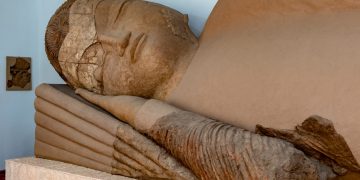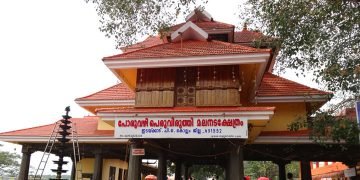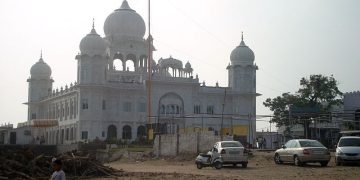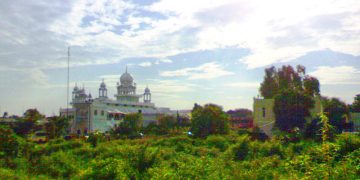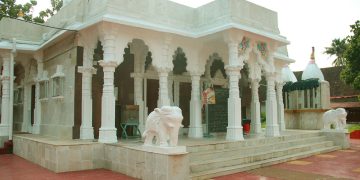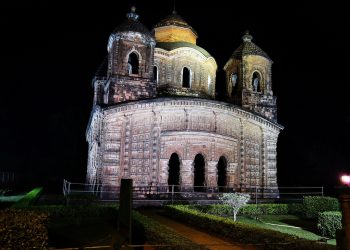Ram Janmabhoomi is the name given to the site that many Hindus believe to be the birthplace of Rama, the 7th avatar of the Hindu deity Vishnu.
Shrine’s History
Taking Hindu mythological records into account, it may be said that the city of Ayodhya over which Ram reigned existed as far back as the Tretha Yug 3 or about 900,000 years ago. This city was rediscovered by King Vikramaditya who rebuilt the temple at the site of Ram Janmabhoomi, Hindus say. If religious records are discounted, historians suggest that the current city of Ayodhya dates back to at least the 7th century AD. It seems a temple of some sort existed at the spot in 1528 when Mir Baqi, a general of the Mughal Emperor Babur raised a mosque at the spot. Ever since the Ram Janmabhoomi has been at the centre of much conflict and an ongoing tussle. According to news reports from 2003, the Archeological Survey of India seems to have found proof of the Ram temples existence predating the mosque at this site. The ASI report, however, is not available in public domain.

Legends Associated with This Shrine
According to Hindu mythology and Puranic lore, Rama was one of the ten avatars of Lord Vishnu, the cosmic preserver. To keep a promise he had made, Vishnu was born as the first son of King Dasharath and crown prince of the kingdom of Kosala. Ayodhya, the capital of Kosala, is believed to be Ramas birthplace. Rama was sent to the forest with his wife and brother to fulfil his fathers promise to his stepmother. In the course of these 14 years, Ramas wife was abducted by a demon called Ravana and an epic war was waged to regain her. A victorious Rama returned to rule from Ayodhya for many years. The city of Ayodhya, also called Saket, was the seat of the Sun Dynasty rulers and a very sacred city, according to Hindu scriptures. According to Jain religious scriptures, the first Tirthankara, Adinath and four other Tirthankaras were born in the city of Ayodhya

Shrine’s Map Location and How to Go There
By Road
Ayodhya is connected with the rest of the state through excellent bus services plying to destinations such as Gonda (51 kilometres), Sravasti (109 kilometres), Gorakhpur (132 kilometres), Lucknow (134 kilometres), Allahabad (166 kilometres), Varanasi (209 kilometres), and Jhansi (441 kilometres).
By Rail
As a Hindu pilgrimage destination, there is a railway station at Ayodhya that offers rail connectivity with the rest of the state. The rail station at Faizabad, however, is a major station and offers rail connectivity with major Indian cities including Delhi, Agra, Mumbai, Varanasi, Ahmedabad, and Kolkata (Howrah and Sealdah).
By Air
Lucknow, the capital city of Uttar Pradesh, is at a distance of about 140 kilometres from Ayodhya and houses the nearest airport. Lucknows Chaudhary Charan Singh Airport is an international airport and connects the state with the rest of the country and also some international destinations.
Shrine Timings
Summers ? 7.30 am to 11.30 am and 4.30 pm to 9.30 pm Winters ? 9 am to 11 am and 4 pm to 9 pm
Events Celebrated at This Shrine
Ram Navami, Dussehra, and Diwali are the biggest festivals celebrated at the Ram Janmabhoomi. Many song and dance programmes are held across Ayodhya, temples undertake special pujas, and thousands of devotees head to
Extra Information About this Shrine
Visitor Information Since bitter disputes and communal violence broke out at the Ram Janmabhoomi, this area is manned by armed security officials around the clock. Visitors are requested to abstain from carrying weapons or suspicious articles. Some shrines may be inaccessible due to security reasons.



